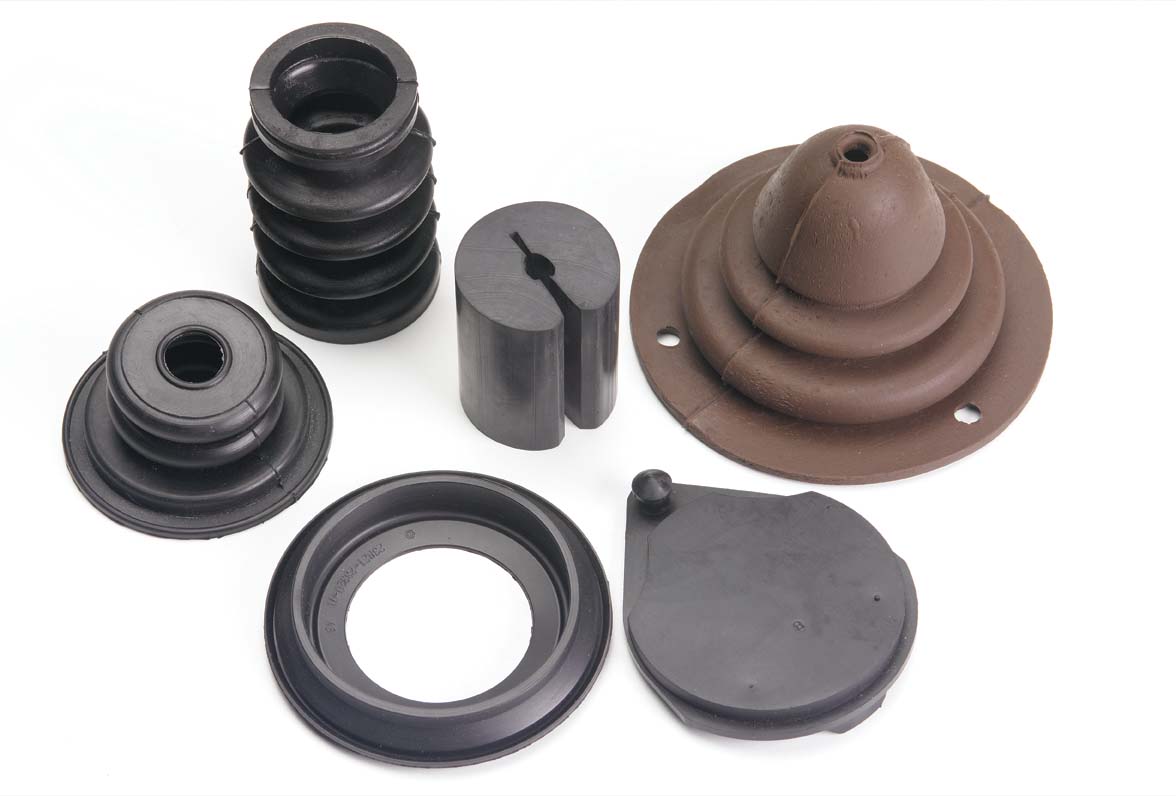
If your parts aren’t built to stand the heat, then they certainly won’t work when in the oven or any other demanding application. Heat resistance is a key factor in material selection for the HVAC, automotive, and other industries with demanding environments. Without that resistance, gaskets, seals, and other rubber and plastic parts are bound for premature failure.
Those exact temperature needs makes it imperative to identify a material that will set your gaskets up for success. It’s important to balance both heat resistance and other performance capabilities to invest in quality gaskets. Let’s break down the various rubber temperature ratings and other key factors for various rubber and plastic materials.
Temperature Ranges for Rubber Materials
EPDM temperature range
Low Temperature Usage: -20° to -60° F | -29⁰C to -51⁰C
High Temperature Usage: Up to 350° F | Up to 177⁰C
Other Key Benefits
- Highly durable
- Excellent for outdoor applications that require resistance to sunlight, ozone, and weathering
- Very cost-effective and versatile in terms of fabrication
Silicone temperature range
Low Temperature Usage: -60° to -150° F | -50°C to -100°C
High Temperature Usage: Up to 480° F | Up to 250°C
Other Key Benefits
- Offers superior tensile strength, elongation, tear strength, and compression sets in extreme temperatures than conventional rubbers.
- Repels water and forms tight seals
- Excellent electrical insulation
Neoprene temperature range
Low Temperature Usage: 10° to -50 F° | -12° to -46 C°
High Temperature Usage: Up to 250 F° | Up to 121 C°
Other Key Benefits
- Outstanding physical toughness
- Excellent resistance oil, petroleum, and weathering for intermittent exposure
Nitrile (NBR and HNBR) rubber temperature range
Low Temperature Usage: -30°F to -40°F | -34°C to -40 °C
High Temperature Usage: Up to 250°F | 121°C
Other Key Benefits
- Excellent oil, fuel, and chemical resistance for regular exposure
- Excellent solution for sealing applications
Viton temperature range
Low Temperature Usage: 10°F to -10°F | -12°C to -23°C
High Temperature Usage: 400°F to 600°F | 204°C to 315°C
Other Key Benefits
- Compatibility with fuel, oils, alcohols, diluted acids, and other substances
- Excellent option for corrosive environments
Natural rubber temperature range
Low Temperature Usage: -20° to -60° F | -29° to -51°C
High Temperature Usage: Up to 175° F | Up to 80°C
Other Key Benefits
- Offers high tensile and tear strength
- Outstanding resistance to part fatigue
Butyl rubber temperature range
Low Temperature Usage: -75° F | -50° C
High Temperature Usage: Up to 250° F | 120° C
Other Key Benefits
- Incredibly durable and flexible for demanding shock absorption parts
- Exceptionally low gas and moisture permeability
Rigid and flexible PVC temperature range
Low Temperature Usage: -40° C | -40° C
High Temperature Usage: 140° F | 60° C
Other Key Benefits
- Resistant to grease, oil, chemicals, and weathering
- Flame resistant with fire prevention properties
Thermoplastic elastomer (TPE) temperature range
Low Temperature Usage: -30 F | -34° C
High Temperature Usage: Up to: 250° F | 121° C
Other Key Benefits
- Can be easily molded or extruded onto hard thermoplastic materials
- Offers both slip resistance and shock absorption
ManniGlas temperature range
Low Temperature Usage: 400° F | 204° C
High Temperature Usage: Up to 1,200° F | 649° C
Other Key Benefits
- High humidity stability
- Easy to die cut into intricate shapes and flexible enough to conform to 90-degree bends
FiberFrax temperature range
Low Temperature Usage: 400° F | 204° C
High Temperature Usage: Up to 1,200° F (2,450° F with special additives) | 649° F (1,343°)
Other Key Benefits
- Excellent thermal shock resistance and low thermal conductivity
- Easy to wrap, shape, and die cut
Invest in the Right Rubber Material for Your Temperature Needs
No matter your temperature requirements, it’s important to identify the best, most cost-effective material for your parts. The tricky part is that it’s not always easy to figure out the right solution without some help.
As a premium rubber parts supplier, Timco has the knowledge and expertise to help you invest in the perfect parts for your applications. Our experts work directly with you to identify any potential opportunities or pain points to find the right solution. Give us a call at 800-969-6242 or contact us online to get a quote for your project today.
